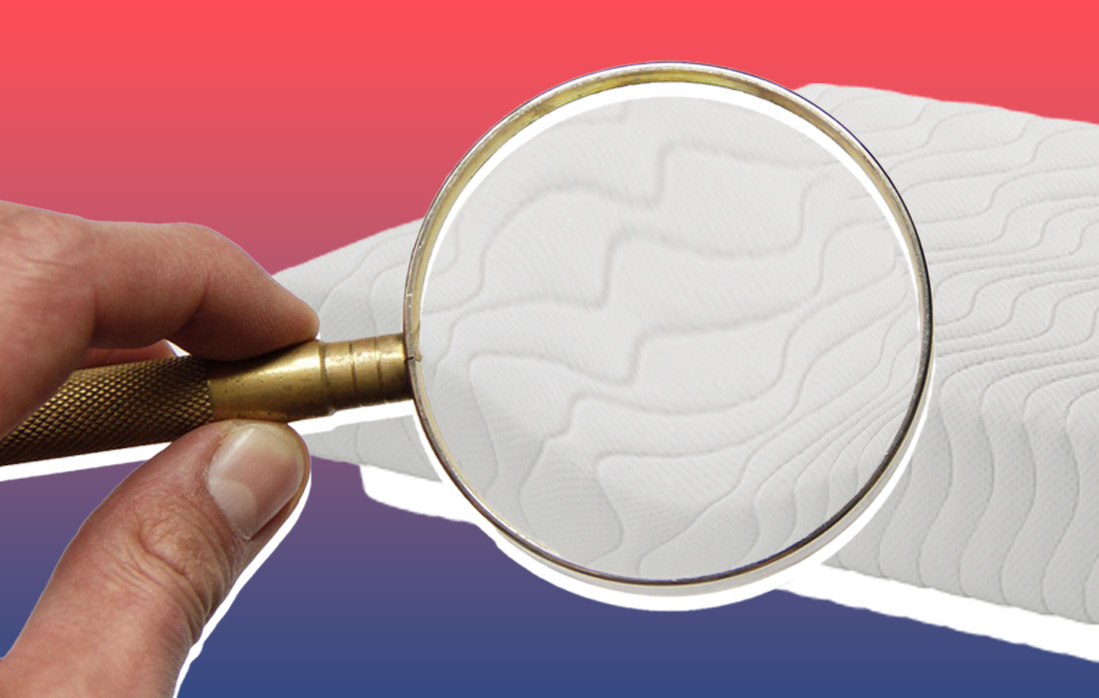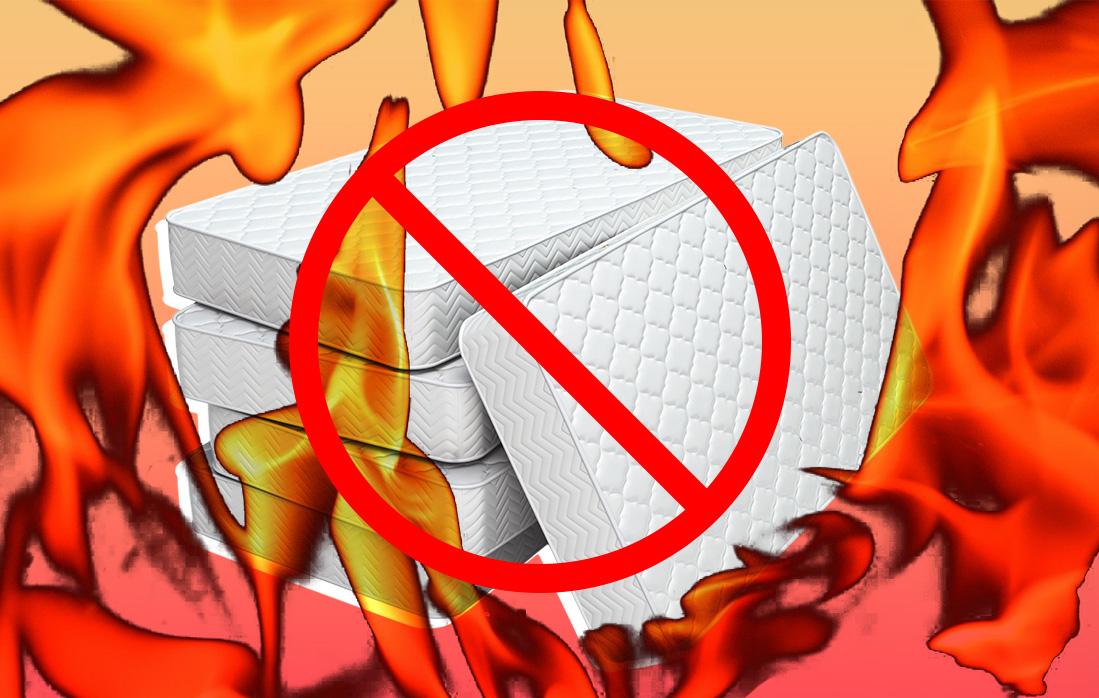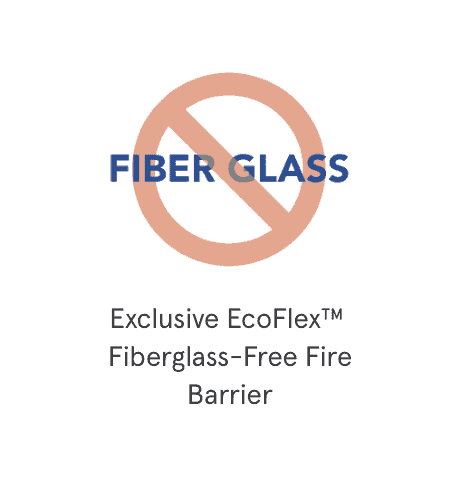
You know that pink cotton candy-looking stuff in your walls? What if I told you your mattress could contain the same type of material? In recent years, the use of fiberglass in mattresses has sparked much controversy and debate over its effectiveness and overall safety. Lucky for you, we’re here to answer all of your questions about the use of fiberglass in mattresses!
What is Fiberglass?
Fiberglass is a composite material made of two things: glass and reinforced plastic. This material is common in mattresses, especially memory foam mattresses and mattress covers. This material is known for being very malleable while also being durable, so it’s easy for manufacturers to work with. It’s also very easy to cheaply mass produce. Fiberglass can be used for a variety of things, but it’s probably most known for wall insulation.
Why is Fiberglass Used in Mattresses?
Fiberglass is sometimes used in mattresses because it acts as a cheap flame retardant. You might not expect it, but that comfy, cozy mattress in your room is actually highly flammable, especially if it’s made from memory foam. If the mattress were to catch fire, the fiberglass causes the mattress to melt instead of burst into flames. This allows the spread of the fire to slow and not reach combustible materials inside your mattress as quickly due to the barrier created by the melted particles.
Due to the Consumer Product Safety Commission, a standard of flammability in mattresses was put in place in 2007. The Standard for the Flammability (Open Flame) of Mattress Sets states mattresses are required to meet the federal safety standard for open-flame fire resistance.
As I mentioned before, fiberglass is a low-cost material and is a cheap way for manufacturers to meet the standard of flammability requirements. In the past, mattresses have been made from foam including flame retardants, but some of those chemicals have been linked to long-lasting health impacts, such as cancer and disruption in hormones. Therefore, many companies opted to use fiberglass instead since it seemed like the safer option and is more affordable than other alternatives, like cotton, wool, rayon, latex, and proprietary blends.

Is Fiberglass Dangerous?
The answer is yes and no. Fiberglass can potentially be harmful if you’re directly exposed to it. The fiberglass weaved into your mattress cover shouldn’t bother you unless the cover is damaged or removed. CEO of Innerbody Research Eric Rodriguez affirms that fiberglass shouldn’t bother you unless the mattress is damaged. “Fiberglass inside a mattress is okay if it stays in,” he says, “but if it gets out, it can wreak havoc on your house and your health.” If the mattress cover gets worn out or is defective, the tiny fibers can get all over everything.
Once the fiberglass is released, it can be impossible to get rid of without a professional. This means it can settle into every inch of your home and even find its way into the HVAC system. If your mattress or its cover contains fiberglass, the tag should explicitly say the cover should never be removed, since the removal is what causes the particles to be released. That’s just one reason why removing your mattress tag isn’t a good idea — you’ll miss those warnings. Even if the mattress cover has a zipper to be removed, it’s recommended you keep it on. Investing in a mattress protector can give your bed added protection and cleanliness.
You’ve probably been instructed to never touch the pink fiberglass in your walls, and the same goes for the fiberglass within your mattress. The fiberglass can give you tiny cuts on your skin, which can cause rashes and blisters, and irritate your eyes and lungs. If this material is inhaled, it can also be dangerous and worsen asthma. Studies have shown the inhalation of airborne fiberglass can lead to adverse health effects.
Some experts, such as Nolah Mattress CEO Stephen Light, think fiberglass “isn’t worth it over the health risks it poses.” He thinks the potential damage to the eyes and lungs and skin irritation are reason enough to opt for a more expensive, yet safer mattress. One couple in Missouri spoke out about the health impacts they and their children experienced after they said fiberglass particles destroyed their entire home. Others have even filed lawsuits against mattress companies over the negative effects of fiberglass inhalation.
How to Tell if There is Fiberglass in a Mattress
If a mattress made of fiberglass is a concern to you, here are some ways to easily detect whether or not a mattress could contain the material. You can also check out our picks for the best mattresses without fiberglass.
Price
As I mentioned earlier, fiberglass is a cheap material, so it shouldn’t drive up the cost of the mattress. Low-priced mattresses ($600 or below for a queen is a good rule of thumb) are more likely to contain fiberglass and potentially other harmful materials. Cost-cutting can sometimes also be synonymous with quality-cutting.
Ask the Company
When you’re looking at a mattress online, you should be able to see the materials used in that mattress and potentially which materials are specifically used as fire retardants. If it doesn’t state it on the website, send the company a message or give them a call. If the customer service agent isn’t able to give you a clear answer, you may want to trust your gut and keep shopping.

Check the Label (and for Greenwashing Terms)
Always check the mattress tag to see the materials. Look for mentions of fiberglass or any greenwashing terms. Greenwashing is when a company uses deceiving jargon to make their product appear more environmentally friendly than it really is. Manufacturers know buyers are sometimes skeptical of fiberglass, so some will use misleading terms like “glass fibers” or “glass wool” instead. However, they typically all mean the same thing — fiberglass.
Origin
Labels that say “made in China” can be good indicators of a mattress containing fiberglass. Other countries can have different standards when it comes to manufacturing. Not all mattresses made in China use fiberglass, but internationally made mattresses are more likely to contain it than products specifically labeled “made in the USA.”
Shop Organic
If you don’t even want to think or worry about fiberglass, it may be a smart idea to narrow your mattress search to exclusively organic products. This way, you’ll know for sure fiberglass isn’t included in the materials. Natural materials, like wool and cotton, are typically used as fire retardants in these products instead. See our best organic mattresses guide for more information about organic mattresses.
Final Thoughts
With all the controversy surrounding fiberglass, it’s important to know all the facts. The type of mattress you purchase is up to you, so be sure to be educated on every aspect of it, not just the way it feels. Go forth and sleep soundly!




























